What is a sliding door?
What is a sliding door?

What is a Sliding Door?
What Does "Sliding Door" Mean?
A sliding door is a type of door that opens horizontally by sliding along a track instead of swinging open like traditional hinged doors. This simple design makes sliding doors practical and stylish for many homes and commercial spaces. You’ll often see sliding doors made from glass, wood, or aluminum. Some people might call them “gliding doors” or even “track doors,” but no matter what you call them, they offer a sleek and functional solution for dividing spaces or connecting indoor and outdoor areas.
Why Are Sliding Doors So Popular Today?
Sliding doors have become incredibly popular because they offer a perfect mix of form and function. They save space since they don’t need extra room to swing open, making them ideal for small areas like bathrooms or closets. They’re also great for creating a modern, open feel in your home. For instance, glass sliding doors let in natural light and connect your indoor and outdoor spaces seamlessly. On top of that, sliding doors are versatile. Whether you prefer a rustic barn door, a chic frameless glass door, or a sturdy aluminum design, there’s a sliding door style to match any décor.
Another reason sliding doors are trending is their energy efficiency. Many modern sliding doors come with insulated glass or weather-resistant frames that help keep your home comfortable year-round. Add their easy-to-use design and stylish look, and it’s easy to see why sliding doors are such a hit with homeowners and designers alike.
Overview of How Sliding Doors Work
Sliding doors operate on a simple track-and-roller system. The door panels glide smoothly along the track, making them easy to open and close. Typically, there’s a fixed panel that stays in place and a sliding panel that moves. The rollers attached to the bottom or top of the door ensure a smooth glide while the track keeps everything in line.
There are different types of sliding doors to suit various needs. For example, pocket sliding doors slide into a hidden wall cavity, disappearing completely when open—perfect for saving space. On the other hand, Barn sliding doors slide along a visible track mounted above the doorway, adding a charming, rustic touch to your home. No matter the style, sliding doors combine practicality with elegance, making them a favorite for small apartments and spacious homes.
With just a little maintenance—like keeping the track clean and debris-free—your sliding door will function smoothly for years. No wonder they’re a go-to choice for anyone looking to upgrade their living space.
The Basics of Sliding Doors
Definition in Simple Terms
A sliding door is a door that moves horizontally along a track to open or close. Instead of swinging open like a regular hinged door, a sliding door glides smoothly to the side. This simple movement saves space and adds a sleek, modern look to any room. Sliding doors are often made of glass, wood, or metal and can be used in homes, offices, or even outdoor spaces like patios. Some people call them “gliding doors” or “track doors,” but no matter the name, sliding doors are all about easy functionality and style.
How It Differs From Other Types of Doors?
Sliding doors stand out because they don’t need extra room to open. A traditional hinged door swings inward or outward, which requires clear space in front or behind it. In contrast, a sliding door stays within its track, making it perfect for small rooms, tight hallways, or spaces where every inch counts.
Another key difference is their design. Hinged doors often have a simple, solid look, while sliding doors can feature wide glass panels or unique finishes, creating an open and airy feel. Unlike folding doors, which stack panels to one side, sliding doors maintain a clean, uninterrupted appearance. This makes them a top choice for creating seamless transitions, especially between indoor and outdoor areas.
Lastly, sliding doors are more versatile in style. They fit into almost any design aesthetic, from rustic barn doors with visible tracks to frameless glass sliding doors with a minimalist vibe. Whether you’re looking for a space-saver, a statement piece, or a combination of both, sliding doors offer a unique solution that other doors can’t match.
Types of Sliding Door
Glass Sliding Door
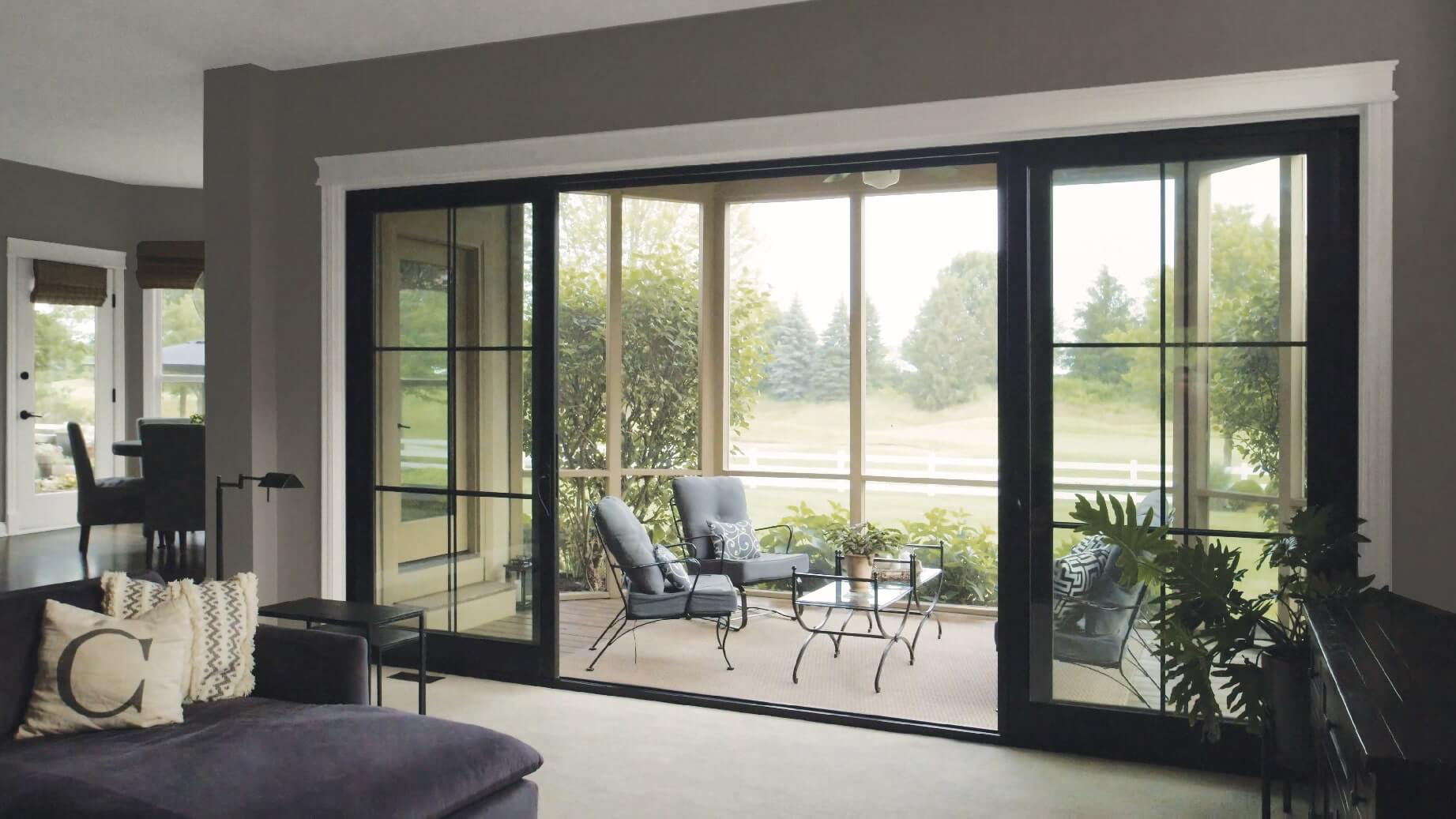
Glass sliding doors are one of the most popular choices for modern homes. These doors typically feature large glass panels that allow natural light to flow into your space. They’re perfect for connecting indoor and outdoor areas like patios or balconies, creating a seamless transition. You can choose clear glass for an open feel, frosted glass for privacy, or tinted glass to reduce glare and heat. Glass sliding doors are sleek, stylish, and ideal for making small spaces feel bigger. Plus, they add a touch of elegance to any room.
Wooden Sliding Door
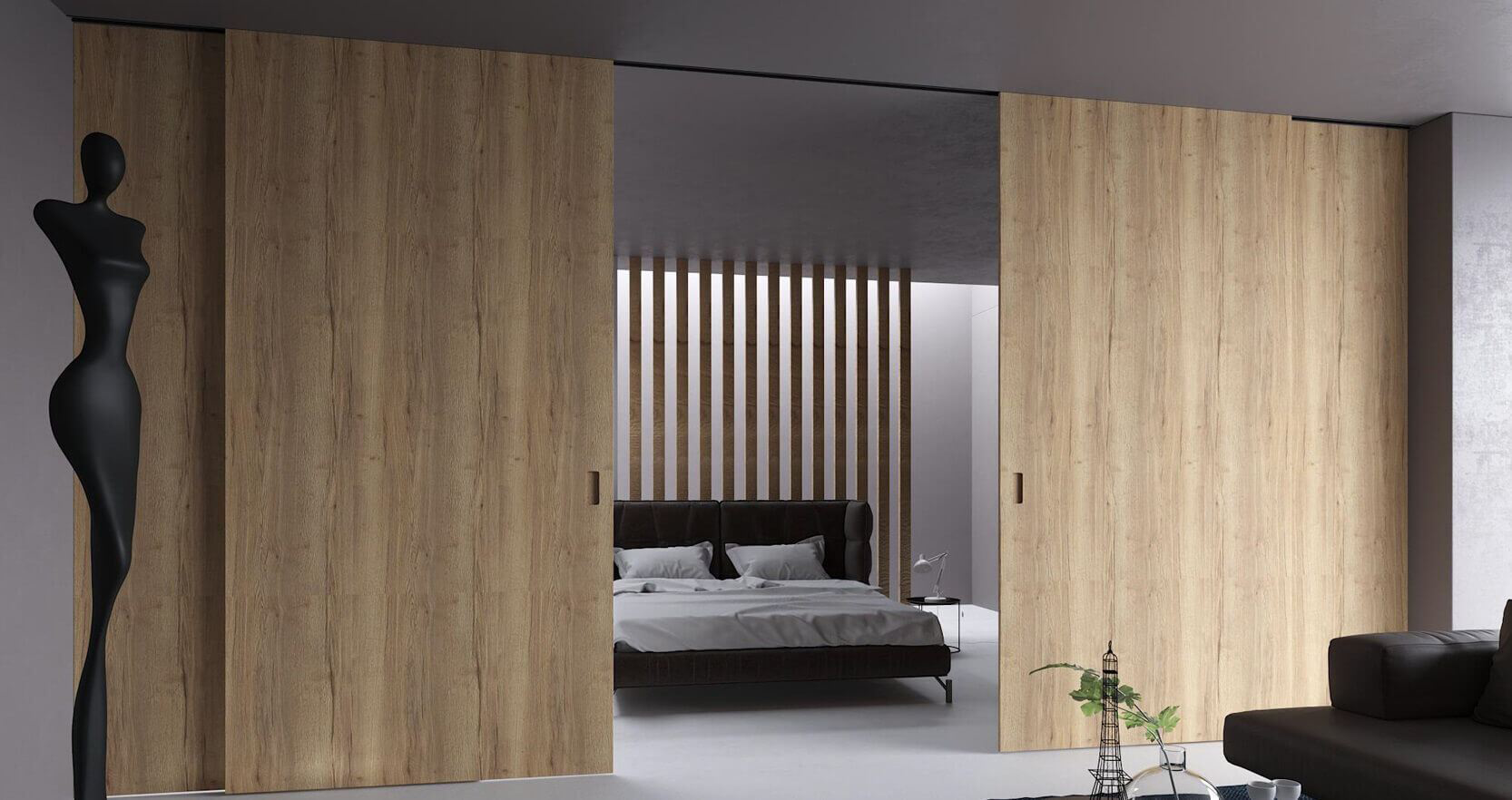
Wooden sliding doors bring warmth and character to a space. They are versatile and can suit both traditional and modern décor. Whether you prefer solid wood’s rich texture or engineered wood’s lightweight practicality, wooden sliding doors offer a timeless charm. They’re great for closets, bedrooms, or as a divider between living spaces. With various finishes and stains available, it’s easy to match wooden sliding doors to your home’s style. They’re durable and soundproof, making them a practical yet stylish choice.
Aluminum Sliding Door
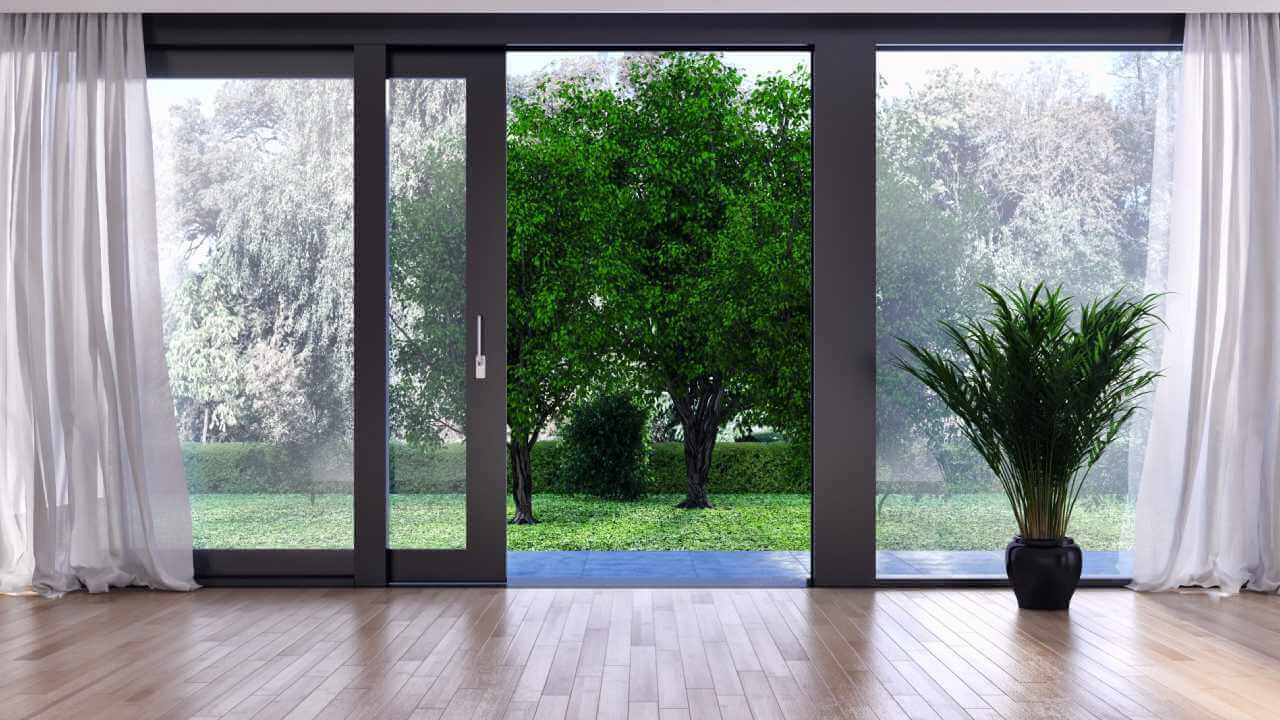
Aluminum sliding doors are known for their durability and modern look. These doors are lightweight yet strong, perfect for large panels and open designs. They’re often used in contemporary homes or commercial spaces. Aluminum frames can hold heavy glass panels while remaining slim, providing maximum views and natural light. They’re also weather-resistant and low-maintenance, making them a great outdoor option. Aluminium is an excellent choice if you’re looking for a sleek, long-lasting sliding door.
Barn-Style Sliding Door
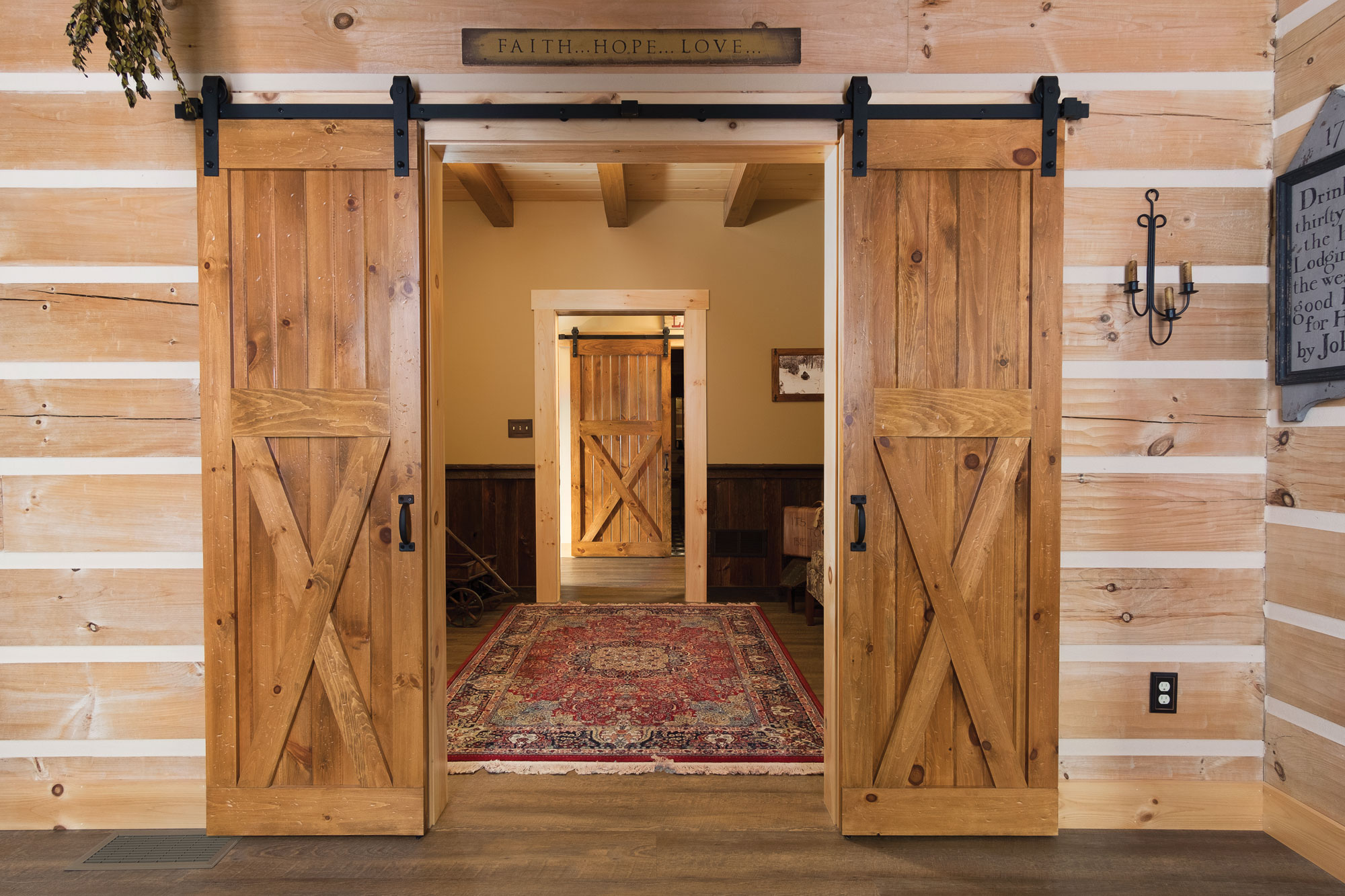
Barn-style sliding doors are a favorite for adding a rustic or industrial vibe to a space. These doors slide along a visible track above the doorway, creating a bold design feature. They’re often made of wood or metal and can be customized with unique finishes, such as distressed wood or matte black hardware. Barn sliding doors are perfect for living rooms, bedrooms, or even pantry doors. They’re functional and decorative, making them popular for farmhouse-style or eclectic interiors.
Pocket Sliding Door

Pocket sliding doors are the ultimate space-savers. Unlike traditional sliding doors, pocket doors slide into a hidden cavity within the wall when open, completely disappearing from view. This makes them perfect for tight spaces like bathrooms or small bedrooms. They’re also great for creating a clean, minimalist look since there’s no visible track or bulky frame. Depending on your design preferences, pocket sliding doors can be made from various materials like glass, wood, or metal. They’re a smart and stylish solution for maximizing space without sacrificing functionality.
Common Sliding Door Synonyms
Sliding doors go by many names, depending on their design, use, or regional preferences. Here are some of the most common terms you might hear:
"Gliding Doors"
“Gliding doors” is another popular way to describe sliding doors. The name highlights their smooth movement along a track, which feels like they’re gliding effortlessly. This term is often used for doors with a sleek and modern design, especially glass sliding doors found in living rooms or patios. People love how gliding doors create a sense of flow between spaces. Gliding doors add functionality and elegance without taking up extra space, whether it’s a minimalist interior or an open outdoor view.
"Track Doors"
Some call them “track doors” because of the visible or hidden tracks they slide on. The track is a key part of any sliding door system, guiding the panels as they move. This term is especially common when discussing barn-style sliding doors or pocket doors. Track doors are practical for homes with tight spaces since they don’t require a swinging room. Whether the track is mounted on the floor, ceiling, or wall, the clean and streamlined design of track doors makes them a favorite for residential and commercial use.
"Panel Doors That Slide"
For those describing sliding doors more functionally, “panel doors that slide” is a straightforward term. This phrase often refers to the door’s construction, with one or more panels that slide horizontally. It’s a simple but clear description, especially when explaining the difference between sliding and folding or hinged doors. Panel sliding doors can be made of glass, wood, aluminum, or composite materials, depending on your desired style. They’re versatile and fit perfectly in closets, bathrooms, or patio doors.
How Sliding Door Work
Key Parts of a Sliding Door
Tracks and Rollers Explained
The track and rollers are the heart of any sliding door system. The track is the pathway that guides the door as it slides open or closed. Depending on the door style, it can be mounted on the floor, ceiling, or even above the wall. The rollers are small wheels attached to the door panel, allowing it to glide smoothly along the track. Together, these components make sliding doors easy to use and reliable.
Good-quality tracks and rollers ensure a quiet and effortless operation. For instance, heavy glass sliding doors often use strong, ball-bearing rollers to handle the weight. Modern systems also include soft-close features, which prevent the door from slamming shut. Keeping the track clean and free of dirt or debris is essential for long-lasting performance. With proper care, sliding doors with well-designed tracks and rollers can function beautifully for years.
Panels and Materials Used
The panels are visible, movable parts of a sliding door, playing a big role in its style and function. Sliding door panels come in various materials, each suited for different needs. Glass panels are a favorite for their sleek look and ability to let in natural light. Options like frosted or tinted glass add privacy without losing the modern feel.
Wooden panels are another popular choice, offering warmth and a classic aesthetic. These are often used for barn-style sliding doors or as room dividers. Aluminum panels, on the other hand, are lightweight yet strong, making them ideal for contemporary spaces. Composite materials combine durability and affordability and are also gaining popularity for sliding doors used in closets or offices.
No matter the material, sliding door panels are designed to fit seamlessly with the track and rollers, ensuring smooth operation. Choosing the right combination of panels and hardware can completely transform the look and feel of your space, making sliding doors practical and stylish.
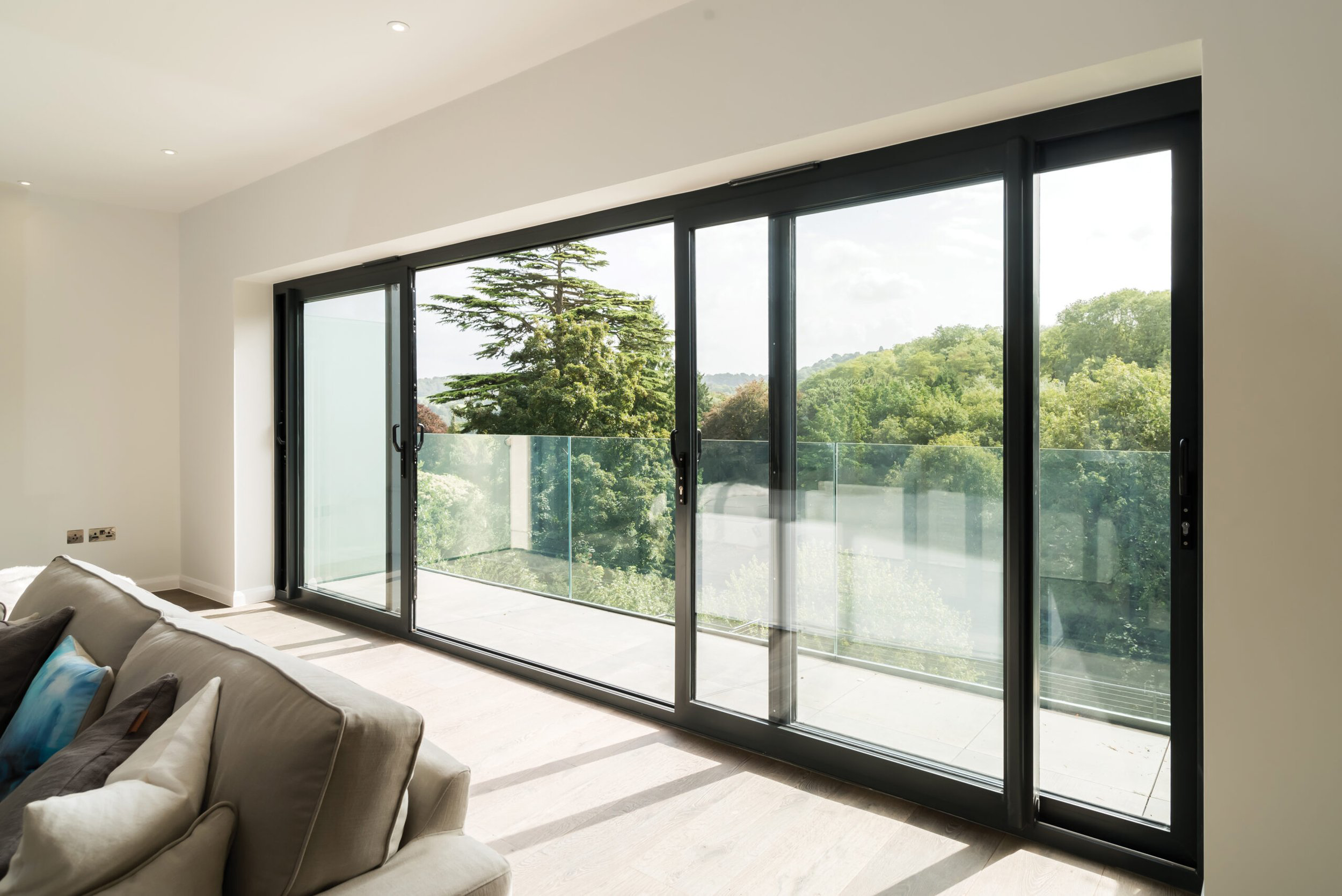
Installation Basics
Wall-Mounted vs. Pocket Installation
Sliding doors can be installed in two main ways: wall-mounted or pocket-style. Wall-mounted sliding doors are easy to install and require minimal structural changes. The door slides along a visible track mounted above the doorway. This type is popular for barn-style sliding doors or as room dividers. It’s practical and adds a decorative element to your space with the exposed track hardware.
Pocket sliding doors, on the other hand, disappear into a hidden cavity inside the wall when opened. This design saves even more space and creates a clean, minimalist look. However, installing pocket sliding doors is more complex and may require remodeling your wall. It’s a great choice for small spaces like bathrooms or closets, where every inch matters. Both options are stylish and functional, so the choice depends on your space and design preferences.
Single vs. Double-Track Systems
Sliding doors can operate on single or double-track systems, depending on how many panels you need. A single-track system holds one sliding panel that moves back and forth. It’s simple and works well for smaller openings or when one panel is enough to cover the doorway.
Double-track systems, however, allow two panels to slide independently or overlap. These are often used for wider spaces, like patio doors or large room dividers. With a double-track system, you can create a more open feel by sliding both panels to one side or meeting them in the middle for a balanced look.
The track system you choose affects your sliding door’s functionality and aesthetics. Single-track systems are great for simplicity, while double-track systems offer more flexibility and a dramatic style. Either way, proper installation ensures smooth movement and long-lasting performance.
Benefits of Sliding Door
Space-Saving Features
Sliding doors are a fantastic choice for saving space in your home. Unlike traditional doors that swing open and require clearance, sliding doors move along a track. This means they take up no extra floor space, making them ideal for small rooms or areas where every inch counts.
Because sliding doors don’t have to swing open, you can use the extra space for furniture, decor, or storage. For example, a sliding closet door lets you place a bed or dresser closer to the wall in a tiny bedroom. In a narrow hallway, a sliding door ensures smooth traffic flow without bumping into furniture or people.
Why They Are Perfect for Tight Spaces?
Sliding doors are perfect for tight spaces because they are functional and stylish. Small apartments or studio homes help create a sense of openness. They don’t interrupt the room’s layout so that you can use your living space better.
They also provide a clean, modern look. Glass sliding doors, for instance, allow natural light to flow through, making even the smallest rooms feel brighter and more spacious. Sliding barn doors or pocket doors are other great options. These designs can add character while solving the problem of limited space.
Ideal Rooms for Sliding Door
Sliding doors work well in many parts of the home. For example:
- Bedrooms: Sliding wardrobe doors save space and add a sleek finish to your room. They also hide clutter effortlessly.
- Living Rooms: Large sliding glass doors connect indoor and outdoor spaces, making your living room feel bigger and more connected to nature.
- Bathrooms: Sliding shower doors are perfect for small bathrooms where a hinged door might feel cramped.
- Kitchens: A sliding pantry door is practical and stylish, keeping items hidden and accessible.
Stylish and Versatile Design
Sliding doors are not just practical—they also add style to your home. Their clean lines and simple movement make them a modern favorite. Whether your space is trendy and minimal or warm and rustic, sliding doors can match almost any interior design.
Their versatility comes from the various materials, colors, and finishes available. From sleek glass panels to rustic wood designs, a sliding door suits every taste. Plus, they can work as room dividers, closet doors, or even statement pieces, adding function and charm to your space.
Matching Sliding Doors to Modern or Rustic Decorative Style
Sliding doors are easy to match with different styles of decorative. For modern spaces, opt for smooth, minimalist designs. Glass sliding doors with black metal frames, for instance, add a sleek and contemporary touch. They pair perfectly with neutral tones, polished floors, and open layouts.
If your home leans towards a rustic vibe, wooden sliding barn doors are a great choice. Reclaimed wood or distressed finishes create warmth and a cosy feel. Pair these with natural textures like wool rugs or stone accents to enhance the rustic charm.
How Glass Doors Create a Sleek Look?
Glass sliding doors are a go-to for achieving a sleek, modern look. They let in natural light, making your space brighter and more open. Frosted or tinted glass options add privacy without sacrificing style.
In addition, glass sliding doors are perfect for connecting indoor and outdoor areas. A large glass door leading to a patio or garden creates a seamless flow, making your home feel larger. The reflective surface of glass also adds a touch of elegance, elevating the overall look of your home.
In short, sliding doors are stylish, versatile, and a great way to enhance your home’s décor while staying practical. Whether you love a modern vibe or a rustic feel, a sliding door is just right for you.
Improved Indoor-Outdoor Connection
Sliding doors are a perfect way to connect indoor and outdoor spaces. They blur the line between your home and nature, making your living areas feel bigger and more inviting. With their wide openings and modern designs, sliding doors allow easy movement and a beautiful view of the outdoors.
Creating a Seamless Flow Between Home and Garden
A sliding door can create a smooth transition from home to garden. Whether you’re hosting a party or enjoying a quiet afternoon, sliding glass doors make it simple to move between spaces. The large glass panels bring in natural light and showcase the greenery outside, giving your home a fresh, open feel.
Sliding doors also work well in small gardens or patios. They let you enjoy the outdoor view even when closed, making the space feel connected year-round. Pair them with light curtains or shades for added style and privacy.
Large Sliding Door for Patio or Balcony Access
For patios and balconies, large sliding doors are both practical and stylish. They create a dramatic entryway that enhances your home’s look while providing excellent functionality. These doors allow you to enjoy panoramic views, whether a lush garden, a cityscape, or a serene ocean.
In warmer months, sliding doors make bringing fresh air into your home easy. They also make outdoor entertaining more convenient. You can easily move food, drinks, and furniture through the wide opening without struggling with traditional doorways.
In short, sliding doors are ideal for improving your indoor-outdoor connection. They brighten your home, expand your living space, and make you feel more connected to nature every day.
Energy Efficiency and Light Control
Sliding doors look great and help improve your home’s energy efficiency. With the right design, they can help regulate indoor temperatures and reduce energy costs. Plus, they offer excellent options for controlling natural light, creating a comfortable and cozy space all year round.
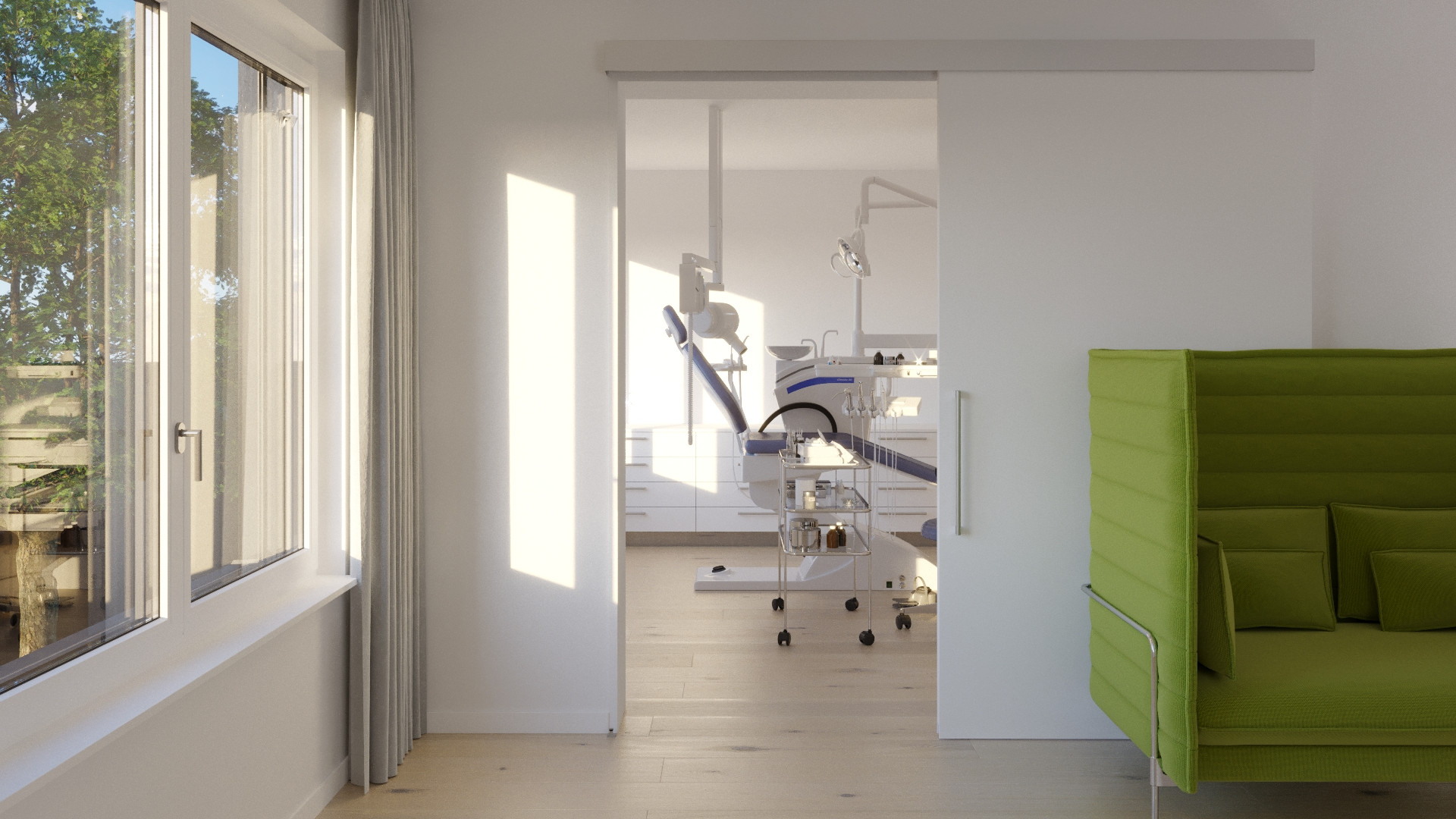
Sliding Door with Thermal Insulation
Modern sliding doors often come with thermal insulation features. These include double or triple glazing, which helps keep your home warm in winter and cool in summer. The insulating properties prevent heat from escaping and block cold drafts, making your home more energy-efficient.
Many sliding doors also have weatherproof seals that further enhance their insulation. This means enjoying large glass panels and stunning outdoor views without worrying about energy loss. For added comfort, consider sliding doors made from materials like uPVC or aluminium with thermal breaks.
Options for Tinted or Frosted Glass
Tinted and frosted glass options for sliding doors are perfect for light control and privacy. Tinted glass reduces glare and filters sunlight, which helps keep rooms cooler on sunny days. It also protects furniture and flooring from fading due to UV exposure.
Frosted glass is another excellent choice, especially for bathrooms or bedrooms. It offers privacy while allowing soft, natural light to fill the space. Both options add a modern, stylish touch to your sliding doors, making them functional and beautiful.
In summary, sliding doors with energy-efficient features and light-controlling glass options are a smart addition to any home. They help you save on energy bills while creating a bright, inviting space that feels just right.
Where Can Sliding Doors Be Used?
Sliding Doors for Homes
Sliding doors are a versatile and stylish choice for many areas of your home. They help save space while adding modern appeal. Whether in your living room, bathroom, or closet, sliding doors can enhance the flow and function of your space.
Living Rooms
Sliding doors are a fantastic addition to living rooms, especially when you want to create an open, airy atmosphere. They work particularly well as patio doors or to lead to a balcony. Glass sliding doors allow natural light to flood the room, making the space feel larger and more inviting. They also provide easy access to outdoor areas, perfect for entertaining or enjoying a nice day outside. You can customize the amount of privacy and sunlight with clear, frosted, or tinted glass options. Plus, the sleek design of sliding doors adds a modern touch to your living room decor.
Bathrooms
In bathrooms, sliding doors are an excellent solution for saving space, especially in smaller or tighter areas. Pocket sliding doors are particularly useful here, as they disappear into the wall when open, leaving more room to move around. Whether for shower doors, bathroom stalls, or even as a way to close off a master bath, sliding doors add both function and style. Glass sliding doors are popular for showers, as they provide a clean, elegant look and keep the water contained while maintaining a sense of openness. For privacy, frosted glass or wooden sliding doors are a great option.
Closets
Sliding doors are a smart and stylish choice for closets. They don’t require extra space to swing open, making them perfect for rooms with limited clearance. For a walk-in closet or a smaller wardrobe, sliding doors can make accessing your clothes and accessories easy without disrupting the room’s layout. Glass panels give a modern touch. In contrast, wooden panels can add warmth and cosiness. If you want to keep your closet area tidy and sleek, sliding doors are the ideal solution. They can even be used for built-in shelves or pantry areas, helping keep everything organized and within reach.
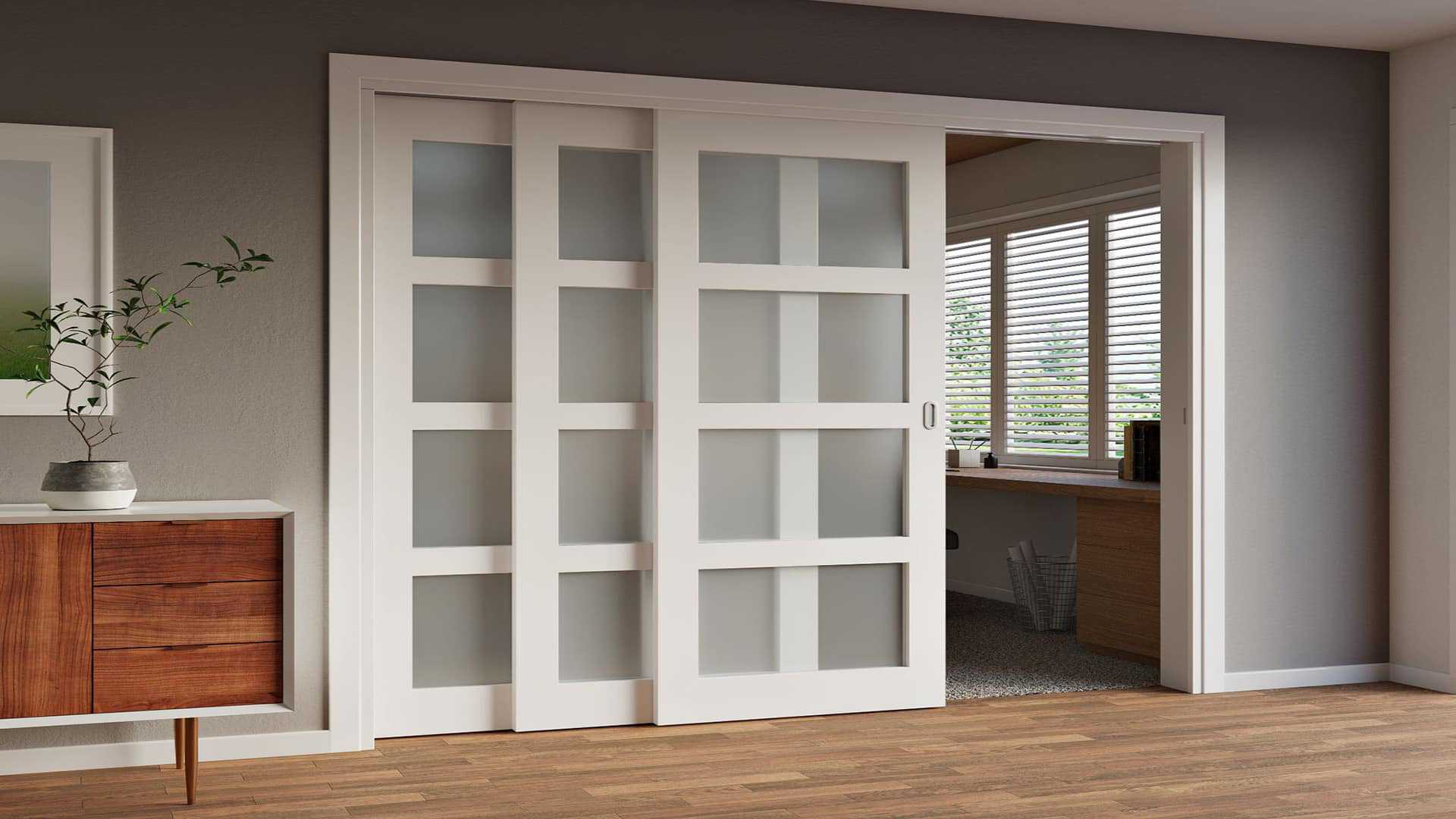
Commercial Sliding Door
Commercial sliding doors are all about functionality and style. In office spaces, retail environments, or restaurants, sliding doors help improve accessibility, enhance aesthetics, and optimize space. With various materials and designs available, they can easily fit the unique needs of any commercial setting.
Office Spaces
In office spaces, sliding doors are popular for creating open, flexible environments. They’re often used to separate meeting rooms, private offices, or break areas without taking up too much space. Glass sliding doors, in particular, offer a professional look while allowing natural light to flow through the building, improving the atmosphere and making the space feel larger. Sliding doors in offices also allow for easy access and quick movement between rooms, essential in fast-paced environments. Whether you want a contemporary glass door or a more traditional wooden style, sliding doors help optimize office layout and productivity.
Retail Stores
Retail stores can greatly benefit from sliding doors, especially for entrances and display areas. Automatic sliding doors are commonly used in stores, allowing customers to enter and exit easily without manually opening doors. This convenience enhances the customer experience and keeps stores secure by reducing the risk of the door being left open. Sliding glass doors are ideal for showcasing merchandise while maintaining an open, welcoming atmosphere. Whether it’s a boutique, department store, or shopping mall, sliding doors improve flow and accessibility while providing a sleek, modern look.
Restaurants
In restaurants, sliding doors are an excellent choice for creating a seamless connection between indoor and outdoor dining areas. Whether you want to open up to a patio or create a partition between different restaurant sections, sliding doors are functional and stylish. Glass sliding doors allow customers to enjoy views. At the same time, dining, with wooden or frosted options, can be used to provide privacy. Sliding doors are also perfect for kitchen entrances, helping staff move between the kitchen and dining areas without disrupting the flow. Their space-saving design makes them ideal for narrow areas and high-traffic zones in restaurants, ensuring smooth operation and a pleasant dining environment.
Outdoor Sliding Doors
Outdoor sliding doors offer flexibility and practicality whether you want to enhance your patio, balcony, or garage. With various materials and designs, sliding doors create a seamless indoor and outdoor flow, allowing you to enjoy your home’s exterior views while maximizing space.
Patio and Garden Doors
Sliding doors are a popular choice for connecting your living room to your patio or garden. Glass sliding doors, in particular, offer an unobstructed view of your outdoor space, allowing you to enjoy your garden or patio while inside. These doors can open up your home, bringing in fresh air and natural light, which is especially refreshing during the warmer months. The smooth sliding mechanism makes them perfect for areas where space is limited because they don’t need extra room to swing open. Whether for a cosy balcony or a spacious backyard, patio sliding doors seamlessly transition between your indoor and outdoor living areas.
Balcony Sliders
If you have a balcony, a sliding door is a perfect way to connect your indoor space to the outdoors. Balcony sliders are often made from glass, allowing you to enjoy panoramic views while maintaining a secure, weather-resistant barrier. Sliding doors on balconies also help conserve space by moving along a track, rather than needing clearance to swing open like traditional doors. This is especially important for urban homes or apartments, as it keeps the area functional without sacrificing style. Balcony sliders are an easy way to make your living space feel more open and accessible while enhancing the overall design of your home.
Garage Sliders
Sliding doors are also an excellent option for garages. Whether you’re looking for a traditional look with wooden panels or a more modern design with glass, sliding doors can enhance your garage’s overall appearance and functionality. Garage sliding doors are ideal for homes where the driveway space is limited. Instead of a swinging door that requires room to open, a sliding door moves along a track, saving you valuable space. These doors are often used in more modern or contemporary homes and can be designed to match the overall aesthetic of the exterior. Garage sliders provide easy access while offering an efficient solution to space-saving needs.
Sliding Door Materials and Finishes
Glass Sliding Door
Clear, Frosted, and Textured Options
Glass sliding doors come in various styles to suit different needs and preferences. Clear glass is popular for its ability to let in natural light and provide an unobstructed view. It’s ideal for connecting indoor spaces to patios, gardens, or balconies, giving your home an open and airy feel. However, frosted glass is a great alternative if privacy is a concern. Frosted glass blurs the view while allowing light to pass, making it perfect for bathrooms or bedrooms. For a more decorative touch, textured glass can add character to your sliding door. Options like etched patterns or ripple designs create a unique look while offering some level of privacy.
Pros and Cons of Glass Panels
Glass sliding doors have plenty of advantages. One of the biggest benefits is how they brighten up a space by allowing natural light to flow through. They also make rooms feel larger and more connected, whether they lead to a garden, balcony, or another part of the home. Plus, glass panels are easy to clean and maintain, a big bonus for busy households.
However, there are a few downsides to consider. Clear glass, while beautiful, doesn’t offer much privacy unless paired with curtains or blinds. It can also show fingerprints and smudges more easily, especially if you have kids or pets. Additionally, glass sliding doors may not be as energy-efficient as other materials unless they are double-glazed or treated with special coatings to improve insulation.
Despite these challenges, the elegance and versatility of glass sliding doors make them a favorite for homeowners. With the right style and maintenance, they can transform any space into something bright, modern, and inviting.

Wooden Sliding Door
Solid Wood vs. Engineered Wood
Wooden sliding doors are a timeless choice that adds warmth and character to any space. When choosing a wooden sliding door, the first choice is between solid and engineered wood.
Solid wood doors are crafted from a single piece of natural wood like oak, pine, or walnut. They are known for their durability and rich, natural grain patterns. Solid wood sliding doors feel sturdy and luxurious but can be heavier and more expensive than other options. They may also expand or contract with changes in humidity, so proper maintenance is essential.
Engineered wood, on the other hand, is made from layers of wood bonded together. It’s designed to be more resistant to warping and moisture, making it a great option for areas like bathrooms or kitchens. Engineered wood sliding doors are often lighter and more affordable but may lack the same premium feel as solid wood. Both options are beautiful, so the choice depends on your budget, style, and functional needs.
Best Finishes for Long-Term Durability
The finish you choose for your wooden sliding door plays a big role in its appearance and longevity. For long-term durability, a clear polyurethane finish is a popular choice. It protects the wood from scratches, moisture, and stains while enhancing its natural grain. This finish works well for both solid and engineered wood doors.
Consider a stained finish if you want a richer, more traditional look. Staining enhances the wood’s natural tones while adding a layer of protection. Dark stains, like espresso or mahogany, create a sophisticated feel, while lighter stains give a more rustic, casual vibe.
For a painted sliding door, use high-quality enamel paint that resists chipping and fading. White or neutral tones are popular for modern interiors, while bold colors can add personality to your space.
No matter the finish, proper care is key. Regular cleaning with a damp cloth and avoiding harsh chemicals will help your wooden sliding door stay beautiful and functional for years. Whether you prefer solid wood’s charm or engineered wood’s practicality, a well-finished wooden sliding door is always a stylish and durable choice.
Metal Sliding Door
Aluminum, Steel, and Other Alloys
Metal sliding doors are a modern, durable option for residential and commercial spaces. Among the most popular choices are aluminium, steel, and other metal alloys.
Aluminium sliding doors are lightweight yet strong, perfect for large panels and frequent use. They resist rust and corrosion, which are great for outdoor applications like patios or balconies. Aluminum also offers a sleek, minimal look, often paired with glass for a contemporary style.
Steel sliding doors are heavier and more robust. They are often chosen for industrial or security purposes because of their durability and resistance to impact. Steel doors can be powder-coated or painted in various colors to match your décor. While they offer excellent strength, they may require more maintenance to prevent rust in certain climates.
Other metal alloys, like bronze or titanium, are less common but provide unique aesthetic and functional benefits. Bronze doors develop a natural patina over time, adding character, while titanium is lightweight and exceptionally strong, though it comes at a higher cost.
Weather Resistance and Modern Appeal
One of the biggest advantages of metal sliding doors is their excellent weather resistance. Aluminum, for example, doesn’t warp, swell, or crack when exposed to rain or heat, making it a reliable choice for outdoor use. When treated with protective coatings, steel also withstands harsh conditions and provides long-term durability.
In terms of style, metal sliding doors bring a clean, modern appeal to any space. Their slim frames allow larger glass panels, creating an open and airy feel. This makes them a favorite for contemporary homes and offices. Metal’s versatility also means it can be finished in various textures and colors, from matte black to polished silver, giving you plenty of design options.
If you’re looking for a sliding door that combines strength, style, and low maintenance, metal is a fantastic choice. Its durability and sleek design make it a practical and stylish solution for any environment.
Things to Consider When Choosing a Sliding Door
Space and Room Layout
How Much Space Does a Sliding Door Need?
Sliding doors are an excellent choice for saving space, but you must still plan carefully to ensure they fit well. Unlike traditional hinged doors, sliding doors move along a track instead of swinging outward, which makes them great for tight spaces. However, you need enough wall space or pocket room for the door to slide open completely.
For wall-mounted sliding doors, ensure the wall next to the opening is clear of obstacles like light switches, outlets, or furniture. If the track length is too short, the door won’t fully open. As a general rule, the track should be at least twice the door panel’s width.
For pocket sliding doors, consider the space inside the wall. The wall must be thick enough to accommodate the door when it’s open. If your wall houses plumbing or electrical wiring, installing a pocket door may need extra work. Always consult a professional if you’re unsure about your space requirements.
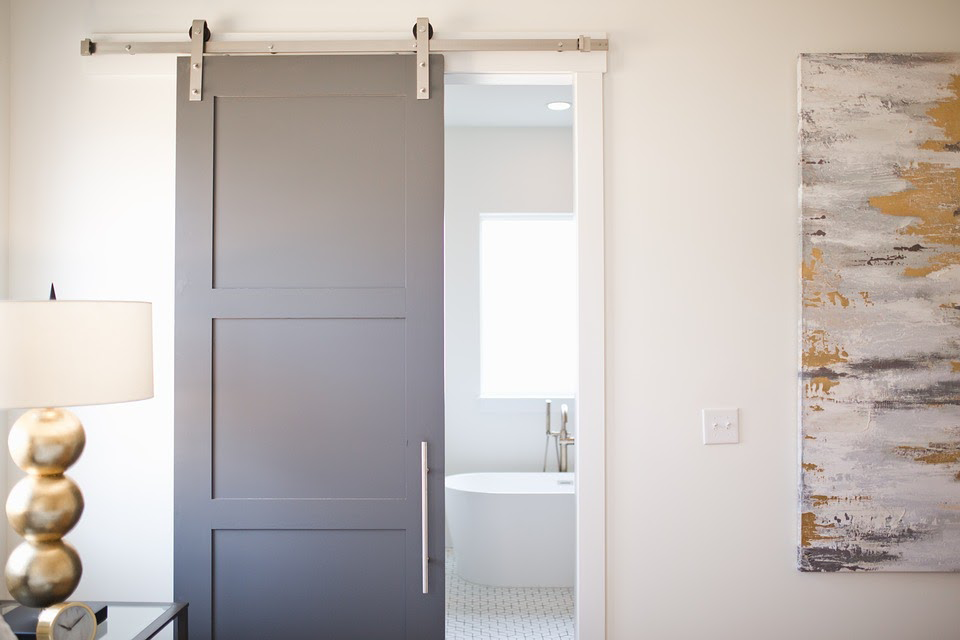
Tips for Measuring the Opening
Getting the right measurements is key to ensuring your sliding door fits perfectly. Start by measuring the door opening width from one side to the other. Measure at the top, middle, and bottom to check for inconsistencies. Use the largest measurement as your width.
Next, measure the opening height from the floor to the top of the frame. Measure on the left, center, and right sides. Again, use the tallest measurement to account for uneven floors.
Don’t forget to measure the depth of the wall or frame if you’re installing a pocket sliding door. This ensures the door can slide smoothly into the pocket without any obstructions.
Lastly, leave a little extra room for adjustments. A door slightly smaller than the opening can be adjusted with trim, but a door too large won’t fit. Taking accurate measurements upfront will save you time, money, and frustration later.
Whether upgrading a small closet or adding a stylish patio entrance, carefully planning your space and measuring will help your sliding door fit like a charm.
Maintenance Needs
Cleaning Glass Panels and Tracks
Keeping your sliding door clean is essential for appearance and functionality. Glass panels often collect fingerprints, dust, and smudges, especially in busy households. To clean the glass, use a microfiber cloth and a glass cleaner. Spray the cleaner directly onto the fabric to avoid streaks or dripping onto the floor. A mixture of warm water and mild soap works wonders for stubborn spots like dried-on dirt.
The tracks of a sliding door also need regular attention. Dust, pet hair, and debris can quickly accumulate, causing the door to stick or slide unevenly. Use a vacuum with a narrow attachment to remove loose dirt from the tracks. After vacuuming, wipe the tracks with a damp cloth to catch any leftover grime. You can use a small brush, like an old toothbrush, to scrub out the corners for deeper cleaning.
Preventing Common Issues Like Sticking or Jamming
One of the most frustrating problems with sliding doors is when they stick or jam. To prevent this, make sure the tracks are clean and free from obstructions. Dirt or small objects in the track can block the rollers, making it hard to slide the door smoothly.
Regular lubrication also helps. Apply a silicone-based lubricant to the tracks every few months. Avoid using oil-based products, as they can attract more dirt over time.
Check the rollers underneath the door for wear and tear. If they’re damaged or misaligned, the door won’t glide properly. You can usually adjust the rollers with a screwdriver by tightening or loosening the screws at the bottom of the door. If the rollers are broken, replacement might be necessary.
Lastly, ensure the frame and panels are properly aligned. If your sliding door is crooked or off-balance, it may jam more frequently. A professional can help if the door needs significant adjustments.
With regular cleaning and a little upkeep, your sliding door will stay in great condition for years, offering smooth operation and a clear, polished look.

Safety Features
Locks and Childproof Options
When it comes to safety, sliding doors should have reliable locks. Most sliding doors have built-in locking systems, but upgrading to high-quality locks can add more protection. Look for multi-point locks that secure the door in multiple places, making it harder for intruders to force the door open.
If you have young children at home, childproof options are a must. Sliding door locks with key features or safety bars can keep the door secure even when little hands try to open it. Childproof sliding door locks can also be mounted higher up, out of a child’s reach.
Additionally, consider using a security bar or rod in the track for protection. These simple devices prevent the door from sliding, even if the main lock is tampered with. They’re especially helpful for patio sliding doors, which burglars often target.
Shatter-Resistant Glass for Extra Security
Sliding doors with glass panels look beautiful but can be vulnerable without the right safety features. Opting for shatter-resistant or tempered glass is a smart way to boost security. Tempered glass is designed to break into small, rounded pieces instead of sharp shards, reducing the risk of injury if the glass is damaged.
For even greater protection, laminated glass is an excellent choice. Laminated glass has an interlayer that holds the glass together if it’s broken, making it harder for anyone to break through. This option is popular for homes with high winds, storms, or heightened security concerns.
Don’t forget to check for safety certifications when choosing glass for your sliding door. Many manufacturers offer glass that meets industry standards for impact resistance and durability.
Combining strong locks, childproofing measures, and shatter-resistant glass, your sliding door can offer style and peace of mind for your family and home.
Sliding Door vs. Other Door Types
Sliding Doors vs. Hinged Doors
Key Differences in Function and Style
Sliding and hinged doors work in very different ways, affecting how they fit into your space. Sliding doors open by gliding along a track, moving side-to-side. This makes them a space-saving option because they don’t swing open like hinged doors. On the other hand, hinged doors are attached to the frame with hinges and swing inward or outward. They need extra clearance to open fully, which can be tricky in tight spaces.
Style-wise, sliding doors often have a sleek, modern look, with large glass panels or minimalist designs. They’re perfect for open-concept homes or spaces where you want to bring in natural light. Hinged doors, however, come in more traditional styles and work well in classic or cosy settings.
Pros and Cons of Each
Sliding Door Pros:
- Space-saving: They’re great for small rooms or tight hallways since they slide.
- Large Openings: Sliding doors often have wider panels, creating a seamless indoor-outdoor flow.
- Modern appeal: Their clean lines and glass options add a contemporary touch.
Sliding Door Cons:
- Cleaning Tracks: Tracks can collect dirt and require regular cleaning.
- Limited Insulation: Sliding doors, especially older ones, may not insulate, and hinged doors may not.
- Less Privacy: Glass panels can feel less private unless frosted or textured.
Hinged Door Pros:
- Better Insulation: Hinged doors often seal tighter, preventing drafts and noise.
- Wide Variety: They come in countless styles, materials, and finishes.
- Easier to Repair: Hinges and knobs are straightforward to replace or adjust.
Hinged Door Cons:
- Space-consuming: Hinged doors need swing clearance, making them less ideal for tight areas.
- Can Block Pathways: When open, they may obstruct movement or furniture placement.
Both sliding doors and hinged doors have their strengths. Sliding doors are perfect for modern, space-conscious designs, while hinged doors bring classic charm and functionality. The choice often comes down to your space, style, and how you plan to use the door.
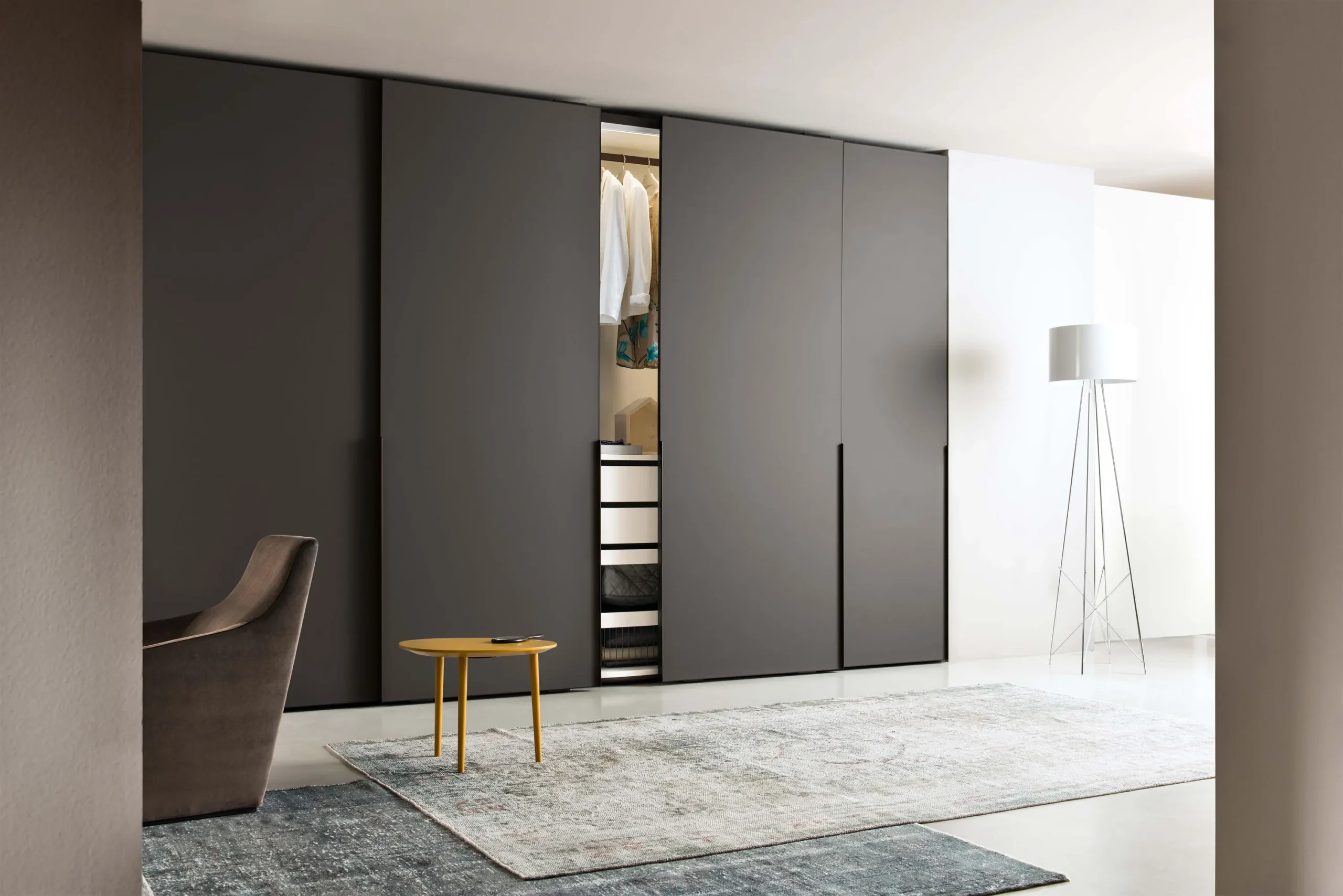
Sliding Doors vs. Folding Doors
When to Choose One Over the Other?
Choosing between sliding doors and folding doors depends on your space, style, and how you’ll use the door. Sliding doors are a great option for an uninterrupted view or easy outdoor access. They work well for patios, balconies, or open-concept interiors where you want to maximize natural light. On the other hand, folding doors are ideal when you need to open up a larger space but still want the option to close it completely. They’re often seen in areas like sunrooms or as dividers between two rooms.
Sliding doors are the way to go if you prefer a sleek, modern design. Folding doors, however, offer a more dynamic and flexible look, making them suitable for spaces where versatility is key.
Space-Saving Benefits Compared
Both sliding and folding doors are designed to save space, but they do it differently. Sliding doors glide along a track, so they don’t require extra room to open or close. This makes them perfect for small spaces, narrow hallways, or rooms where you want to avoid door swings.
Folding doors, while compact when fully open, need a bit of space for their panels to stack. Sliding doors might be the better choice if your room has limited wall space near the opening. However, folding doors shine when you need to open up an entire wall, allowing for a seamless flow between indoor and outdoor areas.
Summary: Sliding doors are ideal for tight spaces and modern designs while folding doors create versatile, open spaces. Both are practical and stylish, so the choice depends on your needs and preferences.
Trending Sliding Door Designs for Modern Homes
Frameless Glass Sliding Door
Minimalistic and Contemporary Looks
Frameless glass sliding doors are the epitome of modern design. Their clean, sleek appearance instantly adds sophistication to any space. Unlike traditional sliding doors, these lack bulky frames, giving them a truly minimalist vibe. They are perfect for homeowners who want an open, airy feel while maintaining a touch of elegance.
These sliding doors often feature clear or frosted glass, making them versatile for living rooms, home offices, or bathrooms. Clear glass creates a seamless connection between spaces, while frosted glass adds privacy without sacrificing light. The frameless design ensures your sliding door blends effortlessly with modern architecture and décor.
Another great feature is how these doors make small spaces feel larger. By removing visual barriers, frameless glass sliding doors allow light to flow freely, making your home feel brighter and more spacious. Whether designing a contemporary interior or enhancing a patio entrance, this sliding door style is a timeless choice for today’s homes.
Rustic Barn Sliding Door
Warm and Cozy Vibes
A rustic barn sliding door brings a sense of warmth and charm to any space. These sliding doors are crafted with natural wood, often featuring rich textures and earthy tones that make your home feel inviting and comfortable. The barn-style design exudes character, whether it’s reclaimed wood or a beautifully stained new panel.
This sliding door style works wonderfully in living rooms, bedrooms, or kitchens where you want a cosy and relaxed vibe. Its distinct look blends well with farmhouse décor but complements modern interiors by adding a rustic touch. The door glides smoothly along its track, offering a stylish alternative to hinged doors while saving space.
One of the biggest appeals of a rustic barn sliding door is its versatility. You can choose from distressed finishes for a vintage feel or darker stains to match a more contemporary aesthetic. With this sliding door, you’re not just adding a functional feature to your home but also creating a warm and inviting focal point that stands out.

Smart Sliding Door
Automated and Motion-Sensor Sliding Door
Smart sliding doors take convenience and functionality to a whole new level. These doors come equipped with automation and motion-sensor technology, allowing them to open and close effortlessly. Whether you have your hands full with groceries or want a smooth, hands-free experience, automated sliding doors offer just that. Motion sensors automatically detect your approach and open the door, making them perfect for high-traffic areas like entryways or patios.
These sliding doors can also be programmed for specific times, helping with energy efficiency. For instance, they could automatically close after a set period, reducing the chance of heat loss or air conditioning inefficiency. Automated sliding doors offer practicality and add a futuristic touch to your home.
Smart Home Integration Options
In today’s connected world, smart sliding doors can seamlessly integrate into your home’s smart system. Imagine controlling your door with your voice through a virtual assistant like Alexa or Google Assistant. You can set up schedules, lock and unlock the doors remotely, or adjust settings easily.
Integration with other smart devices adds even more convenience. For example, your sliding door can sync with security cameras to ensure it’s securely locked when you leave the house, or it can communicate with your thermostat to adjust when the door opens.
Smart sliding doors offer advanced technology and a level of convenience and security that traditional doors can’t match. With more homes becoming smarter, incorporating a sliding door that integrates with your existing smart devices is the ideal solution for tech-savvy homeowners.
Relate FAQ
What is a sliding door?
A sliding door is a type of door that opens horizontally by sliding along a track. Unlike traditional hinged doors, which swing open, sliding doors save space and are ideal for smaller areas or homes with modern designs.
How do sliding doors work?
Sliding doors operate on a track system, allowing the door to slide smoothly when pushed. They often feature rollers or wheels at the bottom or top to reduce friction and ensure easy movement.
What are the benefits of sliding doors?
Sliding doors offer several advantages, including space-saving, easy accessibility, and a sleek, modern appearance. They also allow large openings, perfect for connecting indoor spaces with patios or gardens.
Are sliding doors energy-efficient?
Yes, many sliding doors are energy-efficient. They are typically available with insulated glass and weatherstripping, which help maintain indoor temperatures and reduce energy costs.
What materials are used for sliding doors?
Sliding doors come in various materials such as wood, aluminium, fibreglass, and uPVC. Glass is often used for the door panels, providing visibility and natural light.
Are sliding doors secure?
Modern sliding doors can be made secure with advanced locking mechanisms, such as multi-point locks and reinforced frames, making them a safe option for home security.
Can sliding doors be used as room dividers?
Due to their space-saving design, sliding doors are often used as room dividers. They can easily separate rooms without taking up additional space for swinging doors.
What is the difference between a pocket door and a sliding door?
While both are sliding doors, a pocket door slides into a concealed space within the wall when opened, whereas a regular sliding door stays visible along the track.
How much space do you need for a sliding door?
Sliding doors require less space than traditional hinged doors, but you still need room along the wall to accommodate the sliding mechanism. The track length should be at least the width of the door panel.
What are the different types of sliding doors?
Some popular types of sliding doors include bypass sliding doors (two doors that slide past each other), bi-fold sliding doors, and multi-panel sliding doors for larger openings.
Share This Story, Choose Your Platform!
Send Us A Message
*100% Privacy Guaranteed




